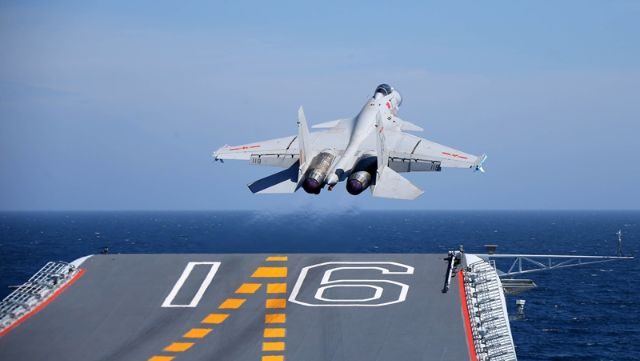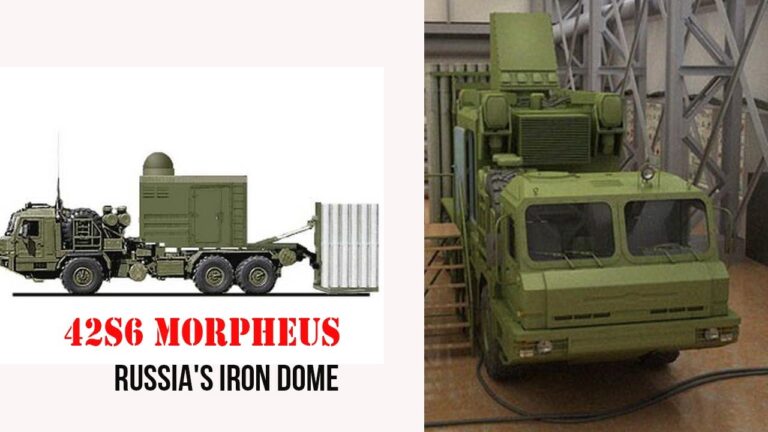
Chinese J-15 Fighter Crashes During Hainan Drill
Social media reports indicate that a Chinese Navy J-15 fighter aircraft crashed in a training exercise in Hainan Province on March 15, 2025, around 1:30 p.m. local time. The accident took place in an open field near Jialai Town, Lingao County. Video evidence posted online seems to show a massive explosion followed by the plummeting of a parachute, suggesting that the pilot ejected safely.
Up to 1:50 p.m. Eastern European Time—an early morning time in America—no public declaration has come out from the Southern Theatre Command of the People’s Liberation Army Navy (PLAN) or the General Staff of the PLAN regarding a confirmation or denial of the event. Thus, the stories stand unverified with only social media as sources.

Social Media Reactions and Widespread Speculation
The report of the supposed crash soon went viral on social media site X (formerly Twitter). One English-language tweet stated, “A Chinese J-15 fighter jet crashed in a training accident. The pilot ejected safely,” with a brief video. Another tweet, written in Russian, read, “A J-15 fighter crashed in China, and the pilot ejected successfully.”
Corresponding posts in Tamil, Urdu, and Japanese added fuel to the speculation. Even with the extensive dissemination of the video, its authenticity and exact location are questionable without independent confirmation from official Chinese media or credible news outlets.
Hainan’s Strategic Military Significance
Hainan Province on China’s southern coast has major military facilities, such as the Lingshui Airbase, and is thus a likely site for a naval aviation training accident. As important as the PLAN’s maritime presence is, an accident there would generate concerns about pilot training procedures and the reliability of aircraft.
Historical Precedents of PLAN Aviation Accidents
This is not the first reported accident involving Chinese military aircraft. In March 2019, a Chinese Navy fighter jet crashed in Hainan Province during a training exercise, resulting in the deaths of both pilots. While the Chinese defense ministry confirmed the incident, it did not disclose the aircraft type, though some analysts speculated it could have been a J-15.
One year prior, in April 2018, a J-15 confirmed crash during training resulted in the death of the pilot. The accident triggered debate over the reliability of the plane, with reports surfacing of “unpardonable mechanical failures.”
By 2018, PLA Air Force Lieutenant General Zhang Honghe had gone on record to publicly admit the J-15 had problems, adding fuel to rumors of future replacements. Other Chinese combat aircraft have also met with the same destiny. In January 2018, an air force plane—presumably a J-10—went down in Guizhou Province in a training flight, killing crew members. In 2015, a reported J-11 crashed, engulfing two pilots in flames shortly after takeoff.
J-15: The Backbone of China’s Naval Aviation
The J-15, called the “Flying Shark,” is China’s flagship naval aviation ship. The Shenyang Aircraft Corporation (SAC) and 601 Institute have developed the J-15 as a twin-engine, carrier-based multirole 4.5-generation fighter aircraft.
China purchased the Soviet Su-33 prototype, the T-10K-3, from Ukraine in 2001, marking its origin. The aircraft was reverse-engineered by engineers who incorporated domestic technologies and avionics from the J-11B program.
The J-15 made its first flight in August 2009 using Russian-supplied Saturn AL-31 turbofan engines. By 2012, the aircraft successfully made its first takeoff and landing on the Liaoning, China’s first operational aircraft carrier.
Ongoing Developments and Variants
A number of J-15 variants have appeared over the years as China continues to develop its carrier-based fighter capabilities. The standard J-15 flies according to Short Takeoff But Arrested Recovery (STOBAR) principles, employing ski-jump ramps on board the Liaoning and Shandong aircraft carriers.
The 2016 prototype of the J-15 added Catapult-Assisted Takeoff But Arrested Recovery (CATOBAR) capabilities, developed at land test facilities ahead of the Fujian carrier’s electromagnetic launch systems. Other variants include the J-15S twin-seat version and the J-15D, an electronic warfare variant similar to the U.S. Navy’s EA-18G Growler.
As of 2021, analysts spotted an improved J-15B, with more advanced avionics, active electronically scanned array (AESA) radar, and support for PL-10 and PL-15 missiles. In 2022, the J-15 transitioned from using Russian AL-31 engines to the locally developed WS-10, which allegedly improved carrier performance and reliability.

Strategic Importance and Future Prospects
The J-15 is still an important tool for China’s naval expansion, especially in the South China Sea, where Beijing makes territorial claims. From carriers like the Liaoning and Shandong, the aircraft conduct air superiority, maritime strike, and electronic warfare missions.
The new Fujian carrier, now in sea trials, will likely host both variants of the J-15 as well as the more advanced stealth J-35, with a planned capacity for up to 60 aircraft. As China develops its blue-water naval power, the J-15 remains a key component of its power projection strategy.
Conclusion: Waiting For Official Confirmation
If confirmed, the March 15 crash would add to the J-15’s troubled safety record. Such an incident would increase scrutiny of China’s pilot training and maintenance standards. Reports suggest the pilot survived, which is a positive outcome.
However, Beijing’s failure to confirm highlights its tightly managed information practices. Until an official statement comes, speculation will surround the crash circumstances. The Southern Theatre Command’s silence follows the PLA’s pattern of hiding operational failures. As a result, observers rely on scattered social media reports for insight into China’s aviation environment.
References
- Global Times – www.globaltimes.cn
- South China Morning Post – www.scmp.com
- The Drive—The War Zone—www.thedrive.com/the-war-zone
- Jane’s Defence—www.janes.com
- Defense News—www.defensenews.com
- China Military Online – www.81.cn
- Naval News – www.navalnews.com
- Air Force Technology – www.airforce-technology.com
- X (formerly Twitter) Reports – www.twitter.com
- Facebook China Military Forums—www.facebook.com/groups







